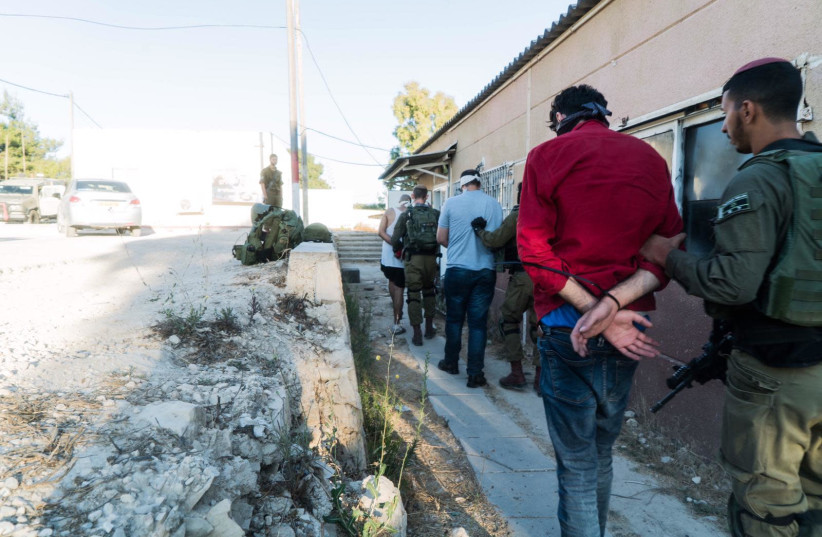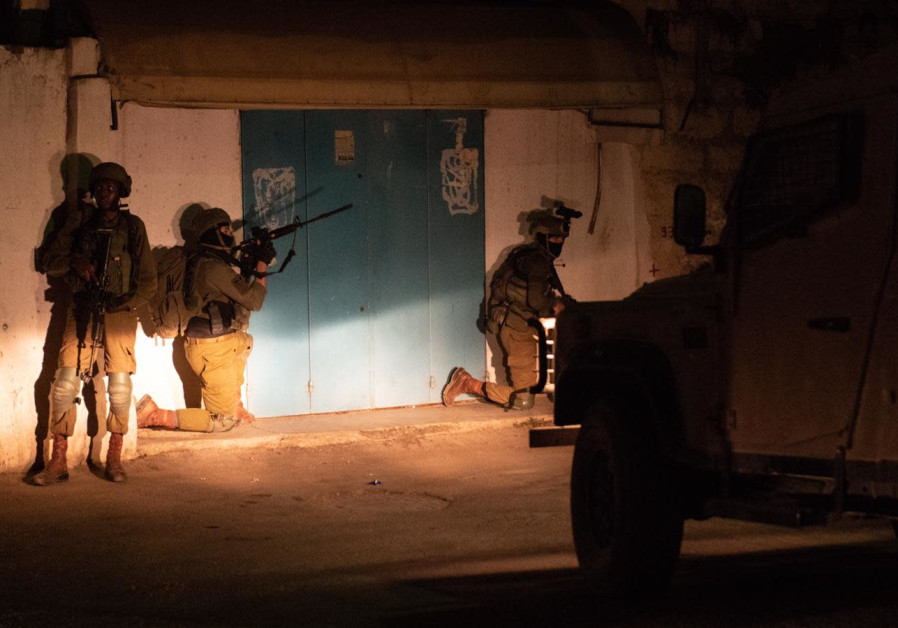Cell behind deadly Dolev spring attack and several shooting attacks; Shin Bet says cell was planning more deadly attacks.

Israeli security forces in the West Bank have uncovered and dismantled a 50-person strong terrorist cell believed to behind a string of deadly attacks in the area including the deadly Dolev bombing which claimed the life of a teenage girl, the Shin Bet (Israel Security Agency) said Wednesday.
According to the Shin Bet the investigation into the Dolev attack, the cell planned to carry out additional attacks in the near future.
As part of the investigation, approximately 50 Popular Front for the Liberation of Palestine (PLPF) operatives, including senior members of the Palestinian terrorist group, were arrested and a large number of weapons were seized including M-16s, Kalashnikovs, Uzis, Galil automatic rifles, pistols with silencers, ammunition and fertilizers to build bombs, as well as walkie-talkies, telescopic devices and others were discovered by security officials.
Many of the weapons were found during a joint IDF and Israel Police raid of a home belonging to one of Arbid’s relatives.
The members of the PFLP cell were arrested in the Ramallah area in recent months and were involved in shooting attacks near the settlement of Ofra in December 2017 and near the settlement of Ofra in March 2019. There were no casualties in either attack.
In October, the Shin Bet announced that they had arrested suspects behind the attack at Ein Bubin Spring near the settlement of Dolev that claimed the life of 17-year-old Rina Shnerb and injured her father and brother.
The suspects were identified as PFLP members Qassem a-Karim Rajah Shibli, Yasan Hasin Hasni Majamas, Nizam Sami Yousef Ulad Mahmoud and cell leader Samer Arbid. According to the Shin Bet, Arbid prepared the explosive device and detonated it when he saw the Shnerb family approaching the spring.

A week later, security forces arrested Walid Muhammed Hanatsheh at his home in the village of al-Tireh outside of Ramallah. Hanatsheh, who acts as Finance and Administration Manager for the Health Work Committees (HWC), has been a member of the PFLP since the Second Intifada and has been arrested by Israel several times before for his membership in the terror group. The Shin Bet said that he served as Arbid’s commander and head of the PFLP’s military wing.
According to the Shin Bet, other senior PFLP militants included Ramallah resident A-Razak Praj, who has been imprisoned by Israel several times in the past for his involvement in promoting terror activity; Khaleda Jarrar who was also imprisoned a number of times for her involvement in PFLP activities and who has emerged as the head of the PFLP in the West Bank responsible for all the organization’s activities; and Atraf Hajaj who is said to be responsible for all of the group’s secret operations and for recruiting additional operatives.
According to the Shin Bet, those arrested in October revealed the details of the preparations they made for the attack and how they implemented them.
“Evidence suggests that intelligence gathering prior to the attack began several weeks before its realization,” the Shin Bet said, adding that the cell members visited the area of the spring on various occasions to outline the attack before they presented the plan to Arbid and received his approval.
The night before the Dolev attack, the cell members made their way north of Ein Bubin Spring armed with guns and explosives. Arbid left Shibli and Majamas in the field along with the explosive device while he drove back towards Ramallah to leave the vehicle far from the scene of the attack.
About an hour later, Hanatasha, who funded the attack, drove Arbid back to where the other cell members were waiting and left. Members of the cell led by Arbid then walked for two hours towards the spring where they placed the explosive device near the entrance to the spring and went up to a spot overlooking the place.
After several hours of waiting, the squad members noticed the Shnerb family approaching and passed the message to Arbid who pressed the trigger leading the powerful charge to explode as the family members walked by.
Following the attack, the cell members escaped to Ramallah where they split up.
During the investigation, security officials searched offices used by PFLP activists in Ramallah where “a great deal of intelligence was found that pointed to the organization’s activities in recent years,” the Shin Bet said, adding that a lot of material regarding the group’s activity in the Ramallah district were identified.
“Intelligence decryption and a strenuous investigation have thwarted attacks planned by the cell in the immediate future,” said a senior Shin Bet officer, adding that had the planned attacks were carried out many lives would have been lost.
“The Shin Bet investigation revealed the immediate danger posed by the activities of the PFLP, as well as the security risk posed by the organization’s leadership leading military operations in the field.
The large amount of weapons seized and the information obtained during the Shin Bet interrogations of the cell members show the risk and the high level of preparedness to execute further serious attacks in the near future which were prevented by the counter-terrorism activity.”
Several serious indictments have already been filed against a large number of cell members, with further indictments expected.
As reported by The Jerusalem Post
